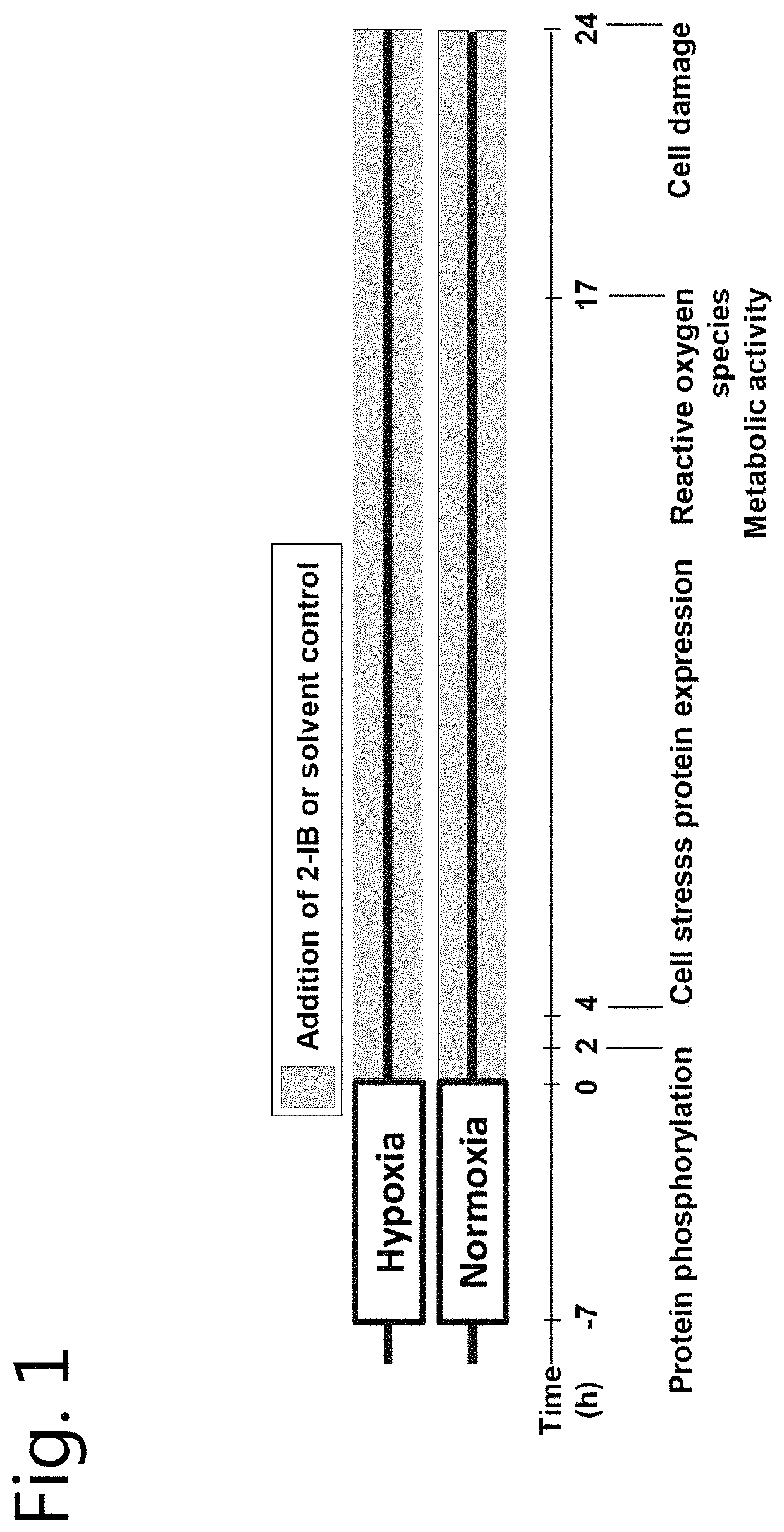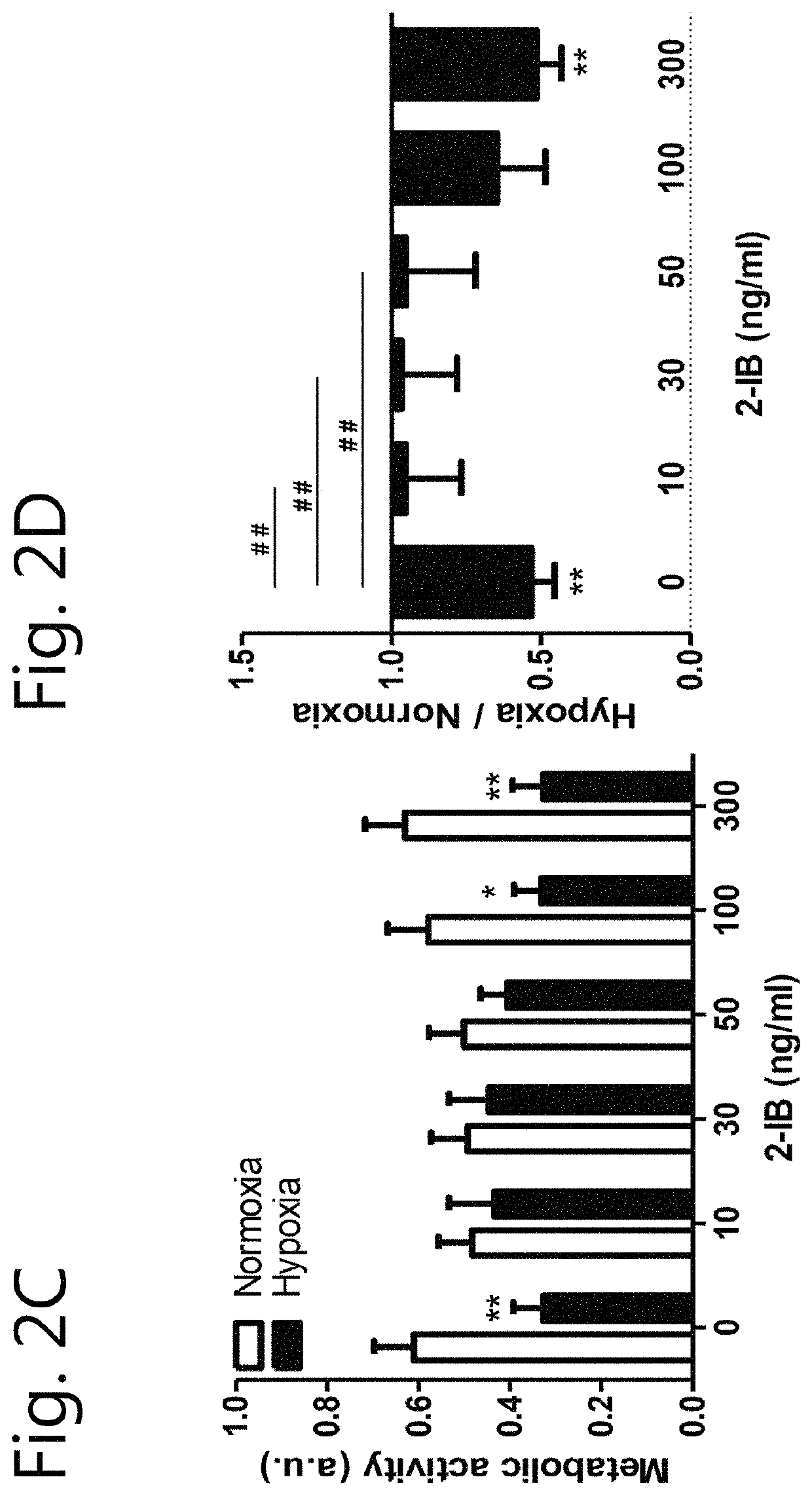2-iminobiotin for use in the treatment of brain cell injury
a brain cell injury and 2-iminobiotin technology, applied in the field of brain cell injury treatment with 2-iminobiotin, can solve the problems of difficult prediction of patients' functional outcome in early stages of ohca, and insufficient cpc score alone to assess patients' functioning,
- Summary
- Abstract
- Description
- Claims
- Application Information
AI Technical Summary
Benefits of technology
Problems solved by technology
Method used
Image
Examples
example 1
ces Hypoxia-Induced Neuronal Cell Damage In Vitro
[0100]There is a lack of knowledge concerning the 2-IB-mediated effects on cellular and molecular levels and the optimal 2-IB concentrations. The aim of this study was to validate possible neuroprotective effects of different 2-IB concentrations in-vitro and to explore the underlying cellular mechanisms.
experimental setting
[0101]In vitro hypoxia was induced in the cell cultures by using our recently described system with minor modifications (Huang et al., 2013b; Weber et al., 2015; Zitta et al., 2010). Enzyme stock solutions (100×) of catalase and glucose oxidase (both from Sigma-Aldrich) were prepared in cell culture medium (DMEM / F12, 1% FCS; final concentration: 120 U / ml and 2 U / ml respectively; Sigma-Aldrich) leading to a decrease of partial pressure of oxygen (pO2) below 10 mmHg within 5 minutes. Hypoxic conditions were confirmed by using a tissue oxygen pressure monitor (LICOX® CMP Oxygen Catheter; Integra, Plainsboro, USA). After 7 hours of hypoxia, the cells were washed twice with PBS (PAA) and fresh normoxic medium supplemented with solvent (citrate buffer 1%) or 2-IB (10, 30, 50, 100 and 300 ng / mL) was added to the cells. Investigations of cell damage, metabolic activity, ROS, hydrogen peroxide, nitrite / nitrate production, erk1 / 2, akt and stat5 phosphorylation as well as cell stress protein e...
example 2
on Treatment of 2-IB and Hypothermia In Vitro
[0171]We have shown that the biotin analogue 2-iminobiotin (2-IB) is able to reduce neuronal cell damage. Here we evaluated whether 2-IB has the potential to attenuate hypoxia-induced neuronal cell damage also under conditions of mild-hypothermia.
[0172]Methods:
[0173]In-vitro hypoxia was induced for 7 hours using IMR-32 cell cultures. After the hypoxic insult, cultures were subjected to 25 hours of mild hypothermia (33.5° C.) and were incubated with or without 2-IB (10, 30, 50, 100 and 300 ng / ml). Cell morphology was evaluated by brightfield microscopy and cell damage was analyzed by LDH assays. Production of reactive oxygen species (ROS) was measured using fluorometric assays. Western blotting for PARP and phosphorylated as well as unphosphorylated akt and erk1 / 2 was performed.
[0174]Results:
[0175]Hypoxia led to morphological signs of cell damage even under hypothermic conditions. Measurements of LDH as a marker of cell damage revealed a s...
PUM
| Property | Measurement | Unit |
|---|---|---|
| temperature | aaaaa | aaaaa |
| weight | aaaaa | aaaaa |
| weight | aaaaa | aaaaa |
Abstract
Description
Claims
Application Information
 Login to View More
Login to View More - R&D
- Intellectual Property
- Life Sciences
- Materials
- Tech Scout
- Unparalleled Data Quality
- Higher Quality Content
- 60% Fewer Hallucinations
Browse by: Latest US Patents, China's latest patents, Technical Efficacy Thesaurus, Application Domain, Technology Topic, Popular Technical Reports.
© 2025 PatSnap. All rights reserved.Legal|Privacy policy|Modern Slavery Act Transparency Statement|Sitemap|About US| Contact US: help@patsnap.com



